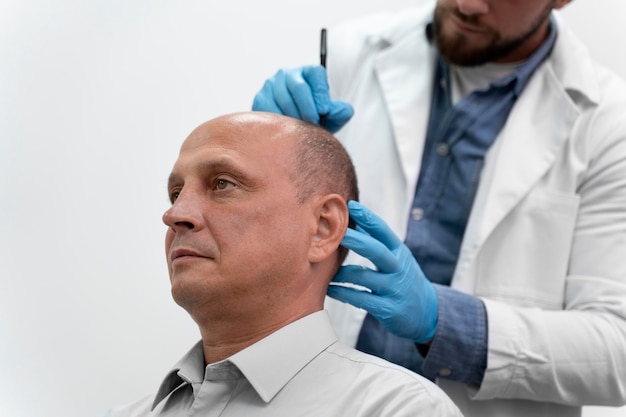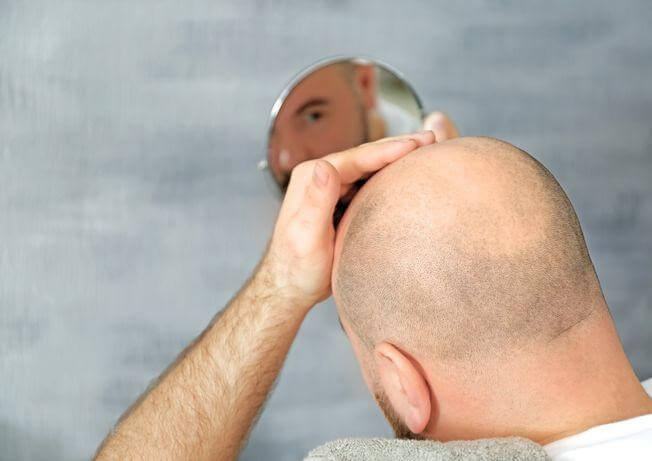Hair loss can have a significant impact on self-esteem, especially when it affects areas like the crown of the head. This type of hair loss, which often results in thinning or bald patches at the crown, is a common concern among both men and women. A crown hair transplant is a powerful solution that offers a transformative way to restore fullness and confidence. In this article, we’ll explore what a crown hair transplant is, how it works, and why it could be the ideal choice for those struggling with hair loss in this area.
What is a Crown Hair Transplant?
A Crown Hair Transplant in Abu Dhabi is a specialized hair restoration procedure designed to address thinning or baldness at the crown of the scalp. The crown is the area at the top and back of the head, often where male pattern baldness first becomes noticeable. Hair loss in this area can be challenging to treat with topical products or medications, but a hair transplant offers a long-lasting and natural solution.
During the procedure, healthy hair follicles are harvested from a donor area (usually the back or sides of the scalp, where hair tends to be more resistant to balding) and transplanted to the crown area. This process allows for the restoration of hair growth in areas that have thinned or lost hair, giving the patient a fuller, more youthful appearance.

Why is the Crown Area Important in Hair Restoration?
The crown area plays a critical role in the overall aesthetic of the scalp. For many individuals, hair loss in this region is one of the first signs of aging or genetic predisposition to pattern baldness. As hair thins or recedes in the crown, it can create an unbalanced, uneven look, which can affect a person’s self-image.
Unlike other parts of the scalp, the crown can be challenging to conceal with hairstyles, and it is often the most noticeable area of hair thinning. Restoring hair to this area can dramatically improve the overall appearance of the hairline, giving individuals the confidence to wear their hair in any style they choose.
How Does a Crown Hair Transplant Work?
A crown hair transplant typically involves two main techniques: Follicular Unit Extraction (FUE) and Follicular Unit Transplantation (FUT). Both techniques are effective, but they differ in the way hair follicles are harvested.
Follicular Unit Extraction (FUE)
In FUE, individual hair follicles are extracted from the donor area using a small, specialized tool. These follicles are then carefully implanted into the crown area. The advantage of FUE is that it leaves minimal scarring, and patients can return to their normal activities relatively quickly.
FUE is often favored by those who want to avoid visible scarring, especially if they prefer short hairstyles or plan to keep their hair closely trimmed. The procedure is minimally invasive, and the recovery time is generally shorter than other hair transplant methods.
Follicular Unit Transplantation (FUT)
FUT, on the other hand, involves removing a strip of skin from the donor area, typically from the back of the head, and then dissecting the strip into individual hair follicles. These follicles are then transplanted to the crown area. While FUT may result in a linear scar at the donor site, it tends to be more suitable for individuals who need a larger number of grafts and are comfortable with slightly longer recovery times.
The Procedure
Regardless of the technique used, a crown hair transplant generally follows a similar process:
- Consultation: During the initial consultation, the surgeon will assess the extent of hair loss, discuss the patient’s goals, and determine the most appropriate approach.
- Preparation: On the day of the procedure, the donor area will be numbed with local anesthesia to ensure comfort throughout the transplant. In some cases, sedation may also be used.
- Harvesting: The hair follicles are harvested from the donor area using the chosen technique (FUE or FUT). In FUE, individual follicles are extracted, while in FUT, a strip of skin is removed.
- Transplantation: The extracted follicles are then carefully implanted into the crown area. The surgeon will strategically place the follicles to ensure a natural-looking hairline and density.
- Recovery: After the procedure, patients may experience some swelling or minor discomfort, but recovery is generally quick. Most patients can return to normal activities within a few days, though it may take several months for the transplanted hair to fully grow in.
Benefits of a Crown Hair Transplant
A crown hair transplant offers several advantages for individuals seeking to restore their hair and improve their appearance. Here are some key benefits:
Natural-Looking Results
One of the biggest advantages of a crown hair transplant is the ability to achieve natural-looking results. Skilled surgeons ensure that the transplanted hair blends seamlessly with existing hair, creating a smooth transition and a full, thick look.
Long-Lasting Solution
Unlike temporary solutions like hair extensions, topical treatments, or wigs, a hair transplant offers a permanent solution. Once the hair follicles are transplanted and begin to grow, they are resistant to future hair loss, providing long-lasting results.
Boosts Confidence
Hair loss can significantly affect one’s self-esteem, especially in visible areas like the crown. A successful crown hair transplant can restore confidence by giving individuals a more youthful and refreshed appearance, enabling them to feel better about their looks.
Low Maintenance
After the recovery period, transplanted hair requires minimal maintenance. Unlike other hair loss treatments that require ongoing applications, transplanted hair will grow like natural hair and can be styled as desired.
Post-Transplant Care
Proper post-transplant care is essential for ensuring the success of the procedure. Patients are typically advised to follow specific instructions, which may include:
- Avoiding strenuous activities and direct sun exposure for the first few weeks.
- Taking prescribed medications to prevent infection and reduce swelling.
- Using special shampoos to keep the scalp clean and promote healing.
- Refraining from touching or scratching the transplant area during the initial healing period.
Hair growth will start to become visible within a few months, with full results typically seen after 9 to 12 months.
The Future of Crown Hair Transplants
As hair restoration technology continues to evolve, crown hair transplants are becoming increasingly refined. New techniques, improved precision, and advanced technologies like robotic-assisted hair transplants are pushing the boundaries of what is possible, allowing for even better results with less downtime.
Additionally, as more people seek solutions for hair loss, crown hair transplants are becoming more accessible and affordable, making this transformative procedure an attractive option for individuals looking to reclaim their confidence and enhance their appearance.
Conclusion
A crown hair transplant is a life-changing procedure for those struggling with hair loss in the crown area. Whether you are looking to restore a full head of hair or simply improve the density and coverage at the crown, this treatment offers a long-term, natural solution. With the latest advancements in hair restoration techniques and a focus on achieving subtle, aesthetically pleasing results, crown hair transplants can help you transform your look and boost your self-confidence. If you are considering this procedure, consult with a skilled surgeon to discuss your goals and determine the best approach for your needs.
